Using advanced computational modelling, a research team led by the University of Oxford, working in partnership with the Instituto Superior Técnico in the University of Lisbon, has achieved the first-ever real-time, three-dimensional simulations of how intense laser beams alter the ‘quantum vacuum’—a state once assumed to be empty, but which quantum physics predicts is full of virtual electron-positron pairs. Excitingly, these simulations recreate a bizarre phenomenon predicted by quantum physics, known as vacuum four-wave mixing. This states that the combined…
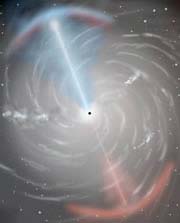
Astronomers shoot first film of the stars, dust and gas at the centre of a galaxy.
Astronomers have made their first movie of the roiling mass of stars, dust and gas at the centre of a galaxy.
The movie zooms into the disk of saucer-shaped galaxy NGC 1068 and through its super-bright core. It reveals an energetic region of space created by material flying out of the suspected black hole at the centre and crashing back into the disk. This region appears as a pale blue cloud

New devices boost optical networks
Several technical requirements must be met until data from computers, TV stations or telephone network providers can be transported via fiber-optic cables to their destinations. Specialists from Infineon Technologies leverage their combined expertise to continuously improve the conditions for today’s and tomorrow’s fiber-optic applications with innovative chip designs. For example, the German technology foundry has developed a special device that ca

An inventive idea from Dr Chris Solomon of the School of Physical Sciences at the University of Kent at Canterbury (UKC) has beaten top International competition and won first prize in the prestigious European Digital Information Contents (DICON) competition.
Dr Solomon who has an active research programme in forensic imaging and a longstanding interest in the computational modelling, encoding and recognition of the human face said: `I was truly impressed by the quality of some of the prese

The planet Jupiter has spectacular rings of auroras around each pole but until now scientists have not been able to explain how they form. All auroras are caused by energetic charged particles crashing into the top of the atmosphere and making it glow. In the Earth’s auroras, these particles come from the Sun in a flow of charged particles known as the solar wind. But this can’t account for Jupiter’s auroras because the solar wind does not reach to the region where the brightest are found. Space phys
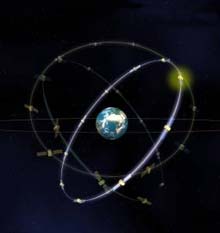
The European Space Agency warmly welcomes the decision taken today by the European Union Transport Ministers, meeting in Brussels.
Galileo has now been given the official go-ahead but for ESA that simply means that work on Galileo can continue! ESA teams have already been working for a number of years on satellite navigation systems, including the development of critical technologies such as atomic clocks and signal generators.
Developed by ESA in collaboration with the European U

Astronomers Dr Simon Jeffery of the Armagh Observatory and Dr Hideyuki Saio of Tohoku University, Japan, have finally solved a long-standing mystery concerning the creation of two particular kinds of rare stars. They have found that a class of variable stars named after their prototype R Coronae Borealis (RCrB), and a related group called `extreme helium stars` are the products of mergers between pairs of white dwarf stars. What kind of star results from the merger depends on the composition of the w
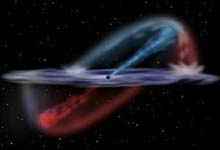
Astronomers using the Gemini North Telescope on Hawaii’s Mauna Kea report that they have created a three-dimensional movie of a powerful, active galaxy located some 70 million light years away. The addition of a new instrument, the Integral Field Unit (IFU), to the Gemini telescope enabled the group to study light from the galaxy NGC1068 in much greater detail. From a single still of NGC1068, the IFU generated data on the physical conditions and velocities of galactic material throughout the image.

Martian atmosphere churns harder in south making north wetter.
Scientists have figured out why it’s wet up north – on Mars. A new computer simulation of the martian atmosphere suggests that the planet’s geography causes differences in atmospheric circulation within the northern and southern hemispheres. These differences dump more water on the martian north pole, where it adds to the seasonal ice-cap.
Mark Richardson of the California Institute of Technology in Pasa

Astronomers at the Gemini telescope in Hawaii have obtained a complete, multi-dimensional picture, of the dynamic flow of gas and stars at the core of an active galaxy [NGC 1068] located 70 million light years away. The image was achieved in a single snapshot and is the first time such a picture has been obtained by one of the new generation of giant telescopes with an 8 – 10 metre light collecting mirror. The astronomers used a new instrument – the Integral Field Unit (IFU), designed and built at Du

The European Space Agency (ESA) and the Canadian Space Agency (CSA) have announced a call to communication companies who are interested in undertaking a contract for brand communication services related to the International Space Station (ISS).
The contract is a significant move for ESA and CSA who want to heighten the profile of the ISS within Europe and Canada to help meet the commercial objectives of the Space Station.
The two organisations want to hear expressions of interest

In a joint project between the Technology Foundation STW and the energy agency Novem at Utrecht University, researchers have developed new silicon layers which are more stable and cheaper than the present amorphous silicon layers. The electronic properties of the present layers in laptop screens and solar cells deteriorate if the material is under ‘stress’, for example due to sunshine or a voltage.
Flat-panel displays and solar cells have a substrate of glass or plastic, which is coated with

Light bending reveals clumps of matter around early galaxy.
European astronomers have got their first glimpse of the soup of matter that surrounded a galaxy in the early Universe, just 3 billion years after the Big Bang. Their results provide clues as to how this matter got together, which is crucial to understanding why the Universe looks the way it does today 1 .
The 12-billion-year-old galaxy is called MS 1512-cB58. It is not the earliest galaxy known, but
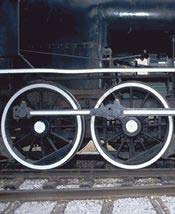
Spot-welds stick sliding metals
Two smooth, cold, metal surfaces are like pieces of tacky Sellotape. They form tiny spot welds that have to be broken apart before they can slide over each other. This, claim two physicists in California 1 , is another reason why metals stick as they slip if they are pressed together and pushed.
Such microscopic causes of friction and wear are increasingly important as the scale of mechanical engineering shrinks to below what

Successful Test Observations With Powerful New Instrument at Paranal
One of the most fundamental tasks of modern astrophysics is the study of the evolution of the Universe. This is a daunting undertaking that requires extensive observations of large samples of objects in order to produce reasonably detailed maps of the distribution of galaxies in the Universe and to perform statistical analysis.
Much effort is now being put into mapping the relatively nearby space and the
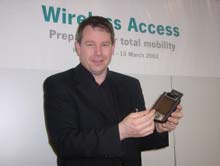
+++ EURESCOM for the first time demonstrates seamless access with a PDA. +++
Premiere at the EURESCOM workshop `Wireless Access` in Heidelberg on 12 March: The EURESCOM project on `Bluetooth Access` presented the first PDA, which can seamlessly connect to different access networks, like LAN, Bluetooth, Wireless LAN, and GPRS.
In co-operation with the software company Birdstep from Norway and access point supplier Patria Ailon from Finland, the European project team implement

Bouncing laser beams could bring quantum strangeness to the everyday world.
The quantum world of atoms and subatomic particles is full of intuition-defying phenomena such as objects existing in two different states at once. We don’t normally have to worry about such weirdness impinging on our everyday macroscopic world. But Italian physicists have worked out how to invest something we can see and touch with quantum strangeness.
Stefano Mancini, of the University of Mila